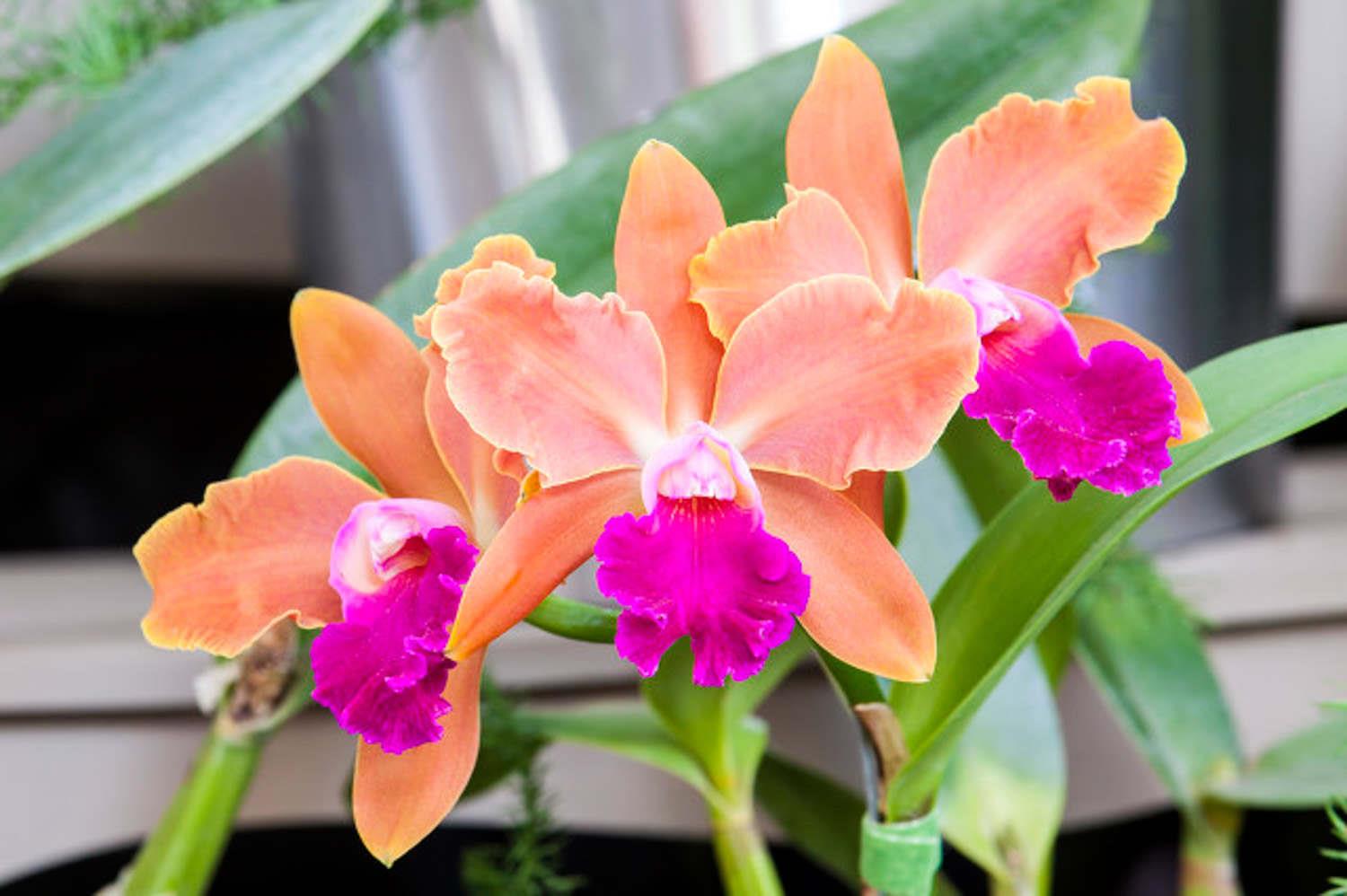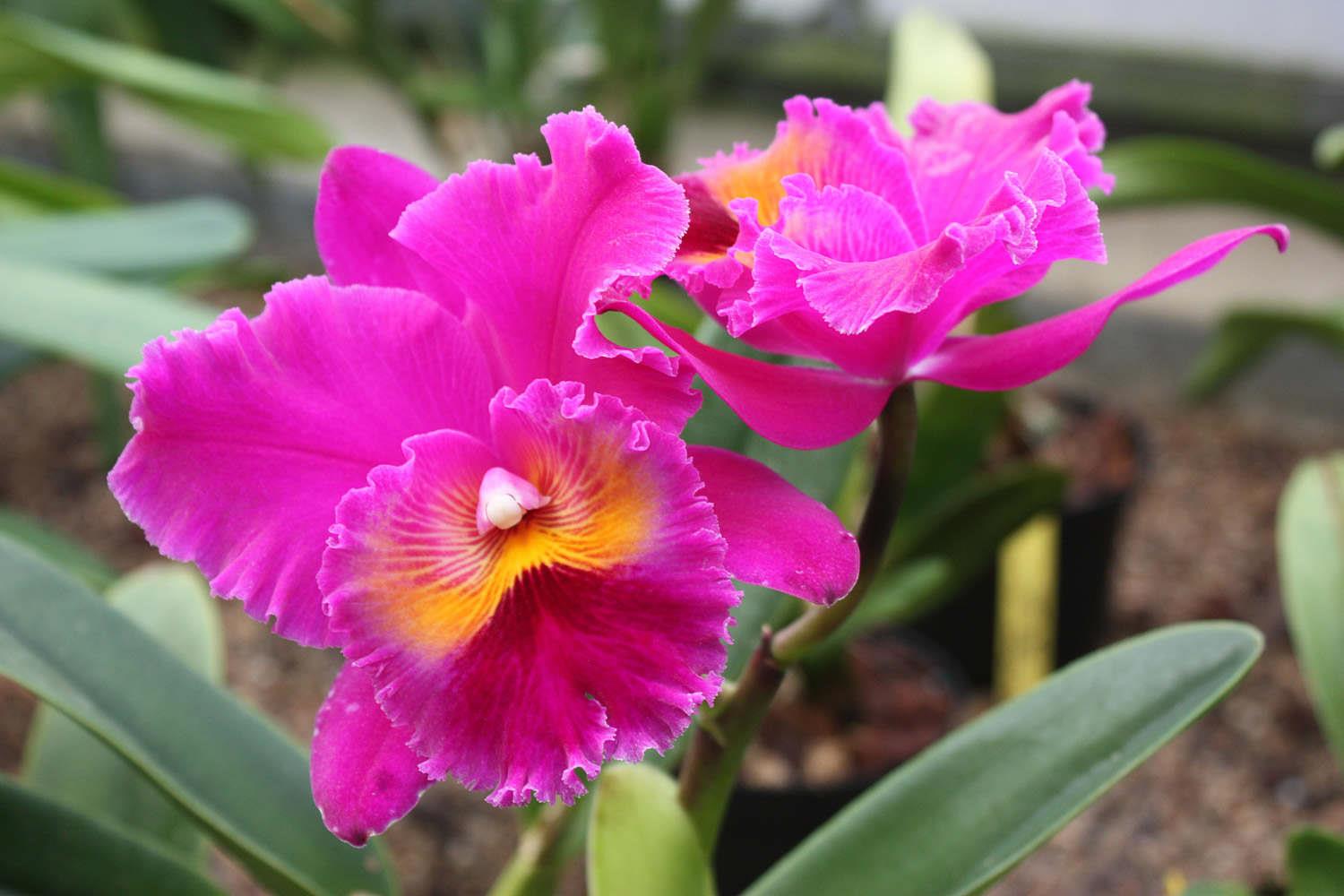How to care for the newly purchased Cattleya
Last Update :2024.11.30
Article Catalog
For the Cattleya you just bought, do not expose it to direct sunlight. Place it in a room with astigmatism for a week to adapt, and then gradually increase the light intensity. Keep the temperature at 25-32°C, touch the sphagnum moss when it is dry and water it thoroughly. Under well-ventilated conditions, frequently spray water on the plants and surroundings to create a maintenance environment with high air humidity. Cattleyas raised with sphagnum moss have little nutrients in the substrate. During the growth period of the plant, some slow-release fertilizer can be buried along the edge of the pot to provide nutrients for the cattleyas.

1. Lighting
1. Light
The cattleya you just bought should be placed in a room with sufficient astigmatism and avoid exposure to the sun. In summer, at least 50% of the light should be blocked, but not too shaded. In other seasons, more Bask in the sun, otherwise it will affect the differentiation of flower buds on the plant and make it difficult to bloom.
2. Temperature
The most suitable growth temperature for Cattleya is 25-32℃. It is particularly afraid of cold. It is best to keep the temperature above 16℃ and below 16℃ for winter cultivation. It is necessary to control the water appropriately. If the temperature is lower than 5℃, it may need to be collected.

3. Watering
Businessmen often cultivate Cattleya with sphagnum moss. You can usually insert your hand into the sphagnum moss. If you feel that the sphagnum moss is dry and the root system of the plant turns white, slowly water the sphagnum moss thoroughly with water, or soak the pot thoroughly.
4. Humidity
Cattleya belongs to the epiphytic orchid family, which has extremely high requirements for air humidity. It is best to keep the humidity above 60% all year round. You can usually keep the humidity around the plant frequently Spray water to artificially increase the air humidity, but the maintenance environment must be ventilated and avoid stuffy heat.

5. Fertilization
Cattleya likes a thin fertilizer, and sphagnum moss as a substrate actually has no nutrients. It must be applied frequently during the growth period of the plant to facilitate the flowering of the plant. You can bury a small amount of slow-release fertilizer particles in the sphagnum moss on the edge of the pot, and then add it as you water. Water provides nutrients for cattleyas.
6. Substrate
As Cattleya grows, if the plant grows too large and the pot is too small, you can change the substrate in early spring, find a pottery pot, and put pottery on the bottom of the pot. The seeds are removed, replaced with new sphagnum moss mixed with bark and replanted.

2. Temperature
3. Watering
4. Humidity
5. Fertilization
6. Substrate
- END -
Detailed explanation of home planting and maintenance methods of Aizhiman

The most common method for growing love vines at home is sowing and propagating. S...
Rock peony cultivation methods and precautions

When growing rock peonies, it is recommended to use sandy soil with good drainage ...